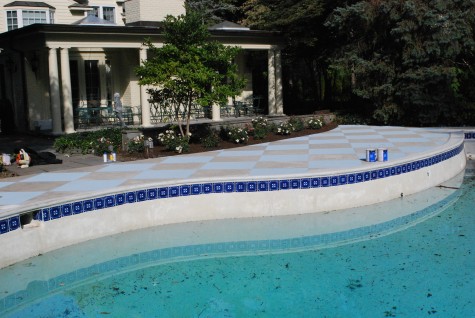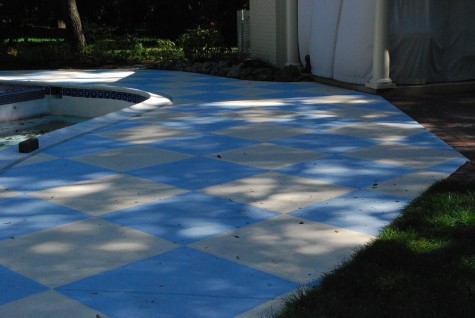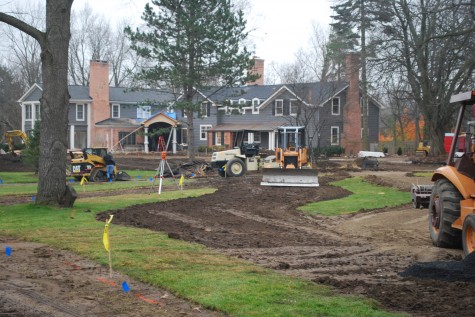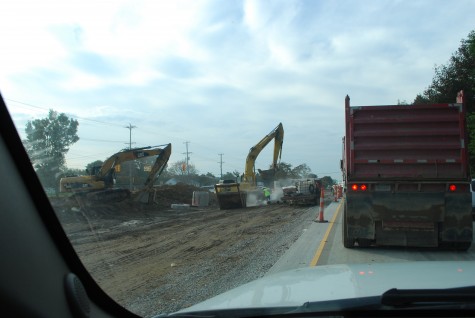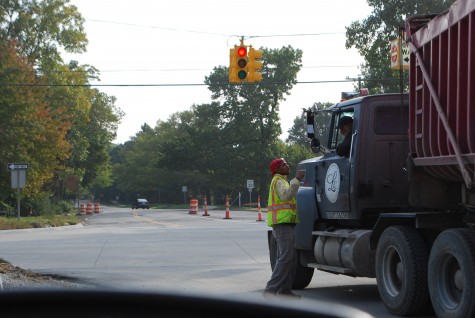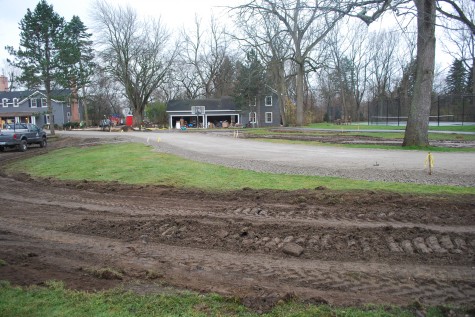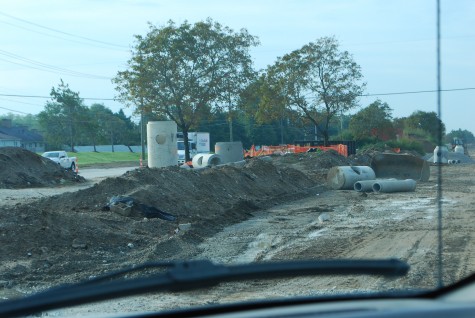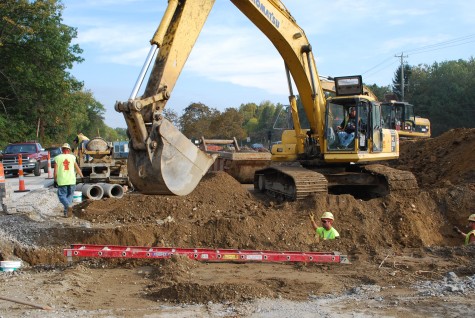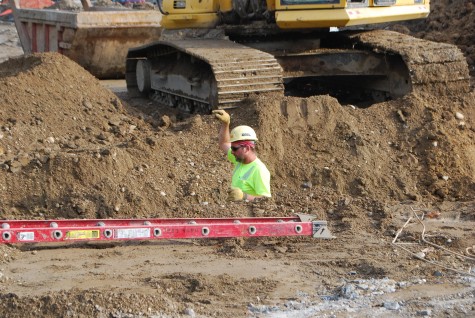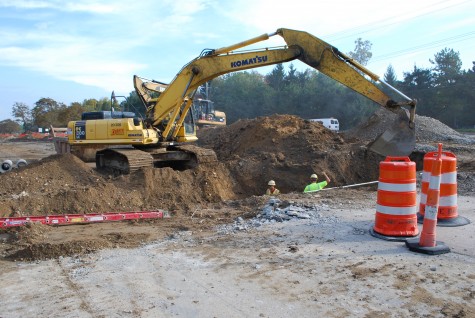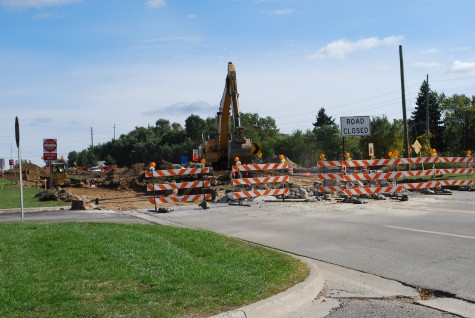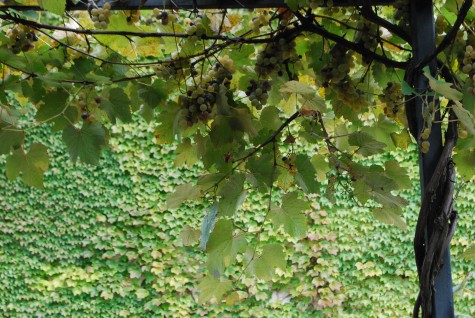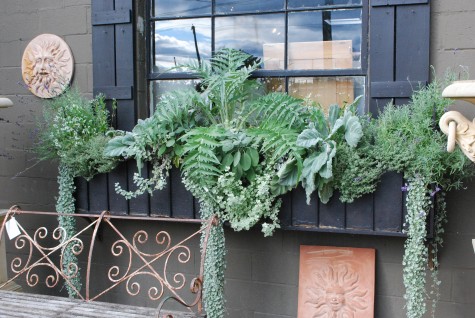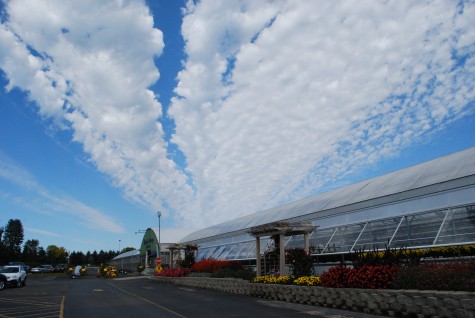 I may have been playing hookey from my writing the past few days, but I have been slammed with work. I have been out shopping for a variety of projects the past few days-but what is really capturing my attention is the show going on overhead. October skies in Michigan can be so vibrantly blue, and the clouds are always such fabulous shapes. I am treasuring these moments, as Michigan winters mean an unvarying shade of lead grey overhead-most every day.
I may have been playing hookey from my writing the past few days, but I have been slammed with work. I have been out shopping for a variety of projects the past few days-but what is really capturing my attention is the show going on overhead. October skies in Michigan can be so vibrantly blue, and the clouds are always such fabulous shapes. I am treasuring these moments, as Michigan winters mean an unvarying shade of lead grey overhead-most every day.
 Blue skies in the fall are that fresh blue that reminds me of lobelia in the spring, cornflowers and belladonna or bellamosum delphinium. So striking and so lively. The clouds overhead yesterday against the blue skies were dramatically directional and three dimensional.
Blue skies in the fall are that fresh blue that reminds me of lobelia in the spring, cornflowers and belladonna or bellamosum delphinium. So striking and so lively. The clouds overhead yesterday against the blue skies were dramatically directional and three dimensional.
 The atmosphere refers to that mass of air surrounding the earth. Clouds like this describe that air in a visually spectacular fashion. I have been seeing the stars the past few mornings-this tells me the blue of the daytime sky will be clear sky blue.
The atmosphere refers to that mass of air surrounding the earth. Clouds like this describe that air in a visually spectacular fashion. I have been seeing the stars the past few mornings-this tells me the blue of the daytime sky will be clear sky blue.

No matter what I might design, engineer, organize or dream up, what nature effortlessly puts on display every day is remarkably beautiful. My efforts to make something beautiful take lots of behind the scenes work. The beauty of nature-out there every day, for everyone to enjoy. We are having a spell of unusually beautiful weather right now. On the ground, 72 degrees.
 Beautiful weather is enabling us to express a sky blue and white idea of our own. Some 15 years ago I stained a concrete pool deck for a client with a checkerboard of blue and cream squares. My client called a month ago-that pool deck, and the landscape, needed an update.
Beautiful weather is enabling us to express a sky blue and white idea of our own. Some 15 years ago I stained a concrete pool deck for a client with a checkerboard of blue and cream squares. My client called a month ago-that pool deck, and the landscape, needed an update.
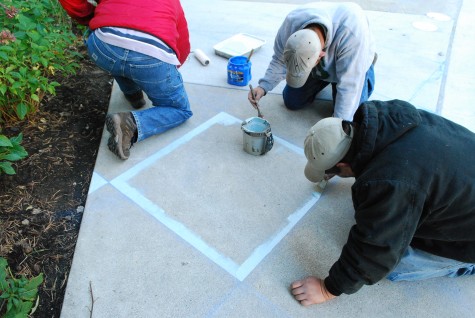 Concrete stain can do an old piece of concrete a world of good. A vintage concrete sidewalk or terrace still in great shape is a great look with a vintage home. Concrete is a common material for pool decking. It can be poured in any shape, it has a slip-resistant texture, and the light color keeps the surface temperature reasonable on a hot summer day. This pool deck was in fine condition, but the old stain looked tired and faded. My client was interested in a fresh look.
Concrete stain can do an old piece of concrete a world of good. A vintage concrete sidewalk or terrace still in great shape is a great look with a vintage home. Concrete is a common material for pool decking. It can be poured in any shape, it has a slip-resistant texture, and the light color keeps the surface temperature reasonable on a hot summer day. This pool deck was in fine condition, but the old stain looked tired and faded. My client was interested in a fresh look.
Steve snapped the 3′ by 3′ checkerboard pattern onto the surface with a chalk line. He painted the blue squares first; the blue chalk became part of the edge of those blue squares. Should you want to stain concrete in a pattern, choose a chalk color that won’t adversely affect the color you intend.
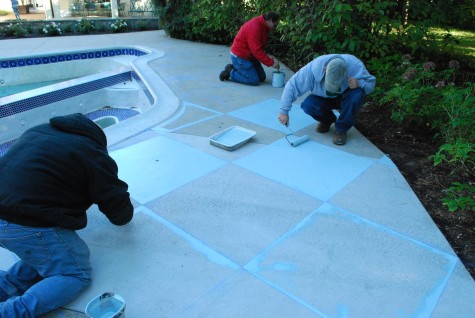 We carefully edged each square by hand; Trevor rolled on the body of the stain from there. The water based stain soaked into the old concrete; years of rain and wear had made the surface open and porous. The rough texture of the concrete has not changed at all-just the color. There is no mistaking the concrete for some other material; this ordinary concrete has a new look that is anything but humdrum.
We carefully edged each square by hand; Trevor rolled on the body of the stain from there. The water based stain soaked into the old concrete; years of rain and wear had made the surface open and porous. The rough texture of the concrete has not changed at all-just the color. There is no mistaking the concrete for some other material; this ordinary concrete has a new look that is anything but humdrum.
 Cloud white would have been too glaringly white for the alternate squares. A soft yellow-cream would contrast with the blue, but not blindingly so.
Cloud white would have been too glaringly white for the alternate squares. A soft yellow-cream would contrast with the blue, but not blindingly so.
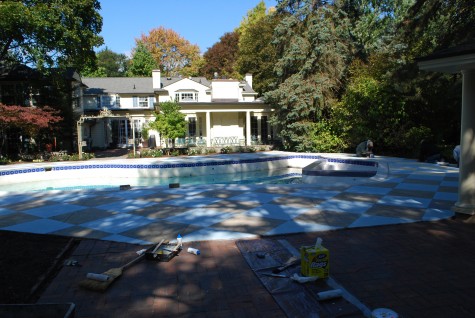 Even at this stage, I could tell the staining of the concrete would make a big visual statement from a utilitarian surface. The comment from my client’s pre-teenage grandson? This makes it look like young people live here. I rather like this description.
Even at this stage, I could tell the staining of the concrete would make a big visual statement from a utilitarian surface. The comment from my client’s pre-teenage grandson? This makes it look like young people live here. I rather like this description.
